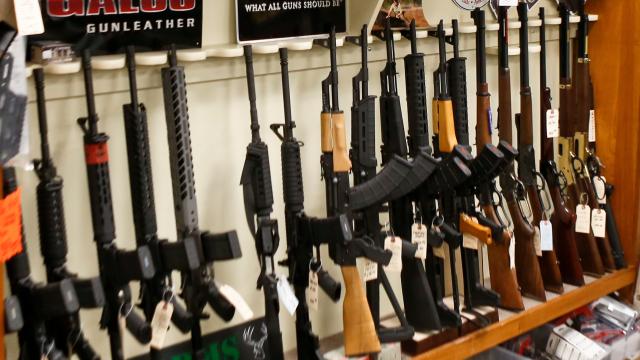After the massacre at Marjory Stoneman Douglas High School in Parkland, Florida on February 14 resulted in at least 17 deaths and 14 injuries, the pro-gun rights crowd trotted out a number of frustratingly familiar arguments. One of them, per Florida Sen. Marco Rubio, was that it would be impossible to effectively regulate firearms like the AR-15 used in the attack without banning all semi-automatic rifles.
He might have had a point, though it’s not really one in his favour. Per a devastating piece in the New York Times on Sunday, trauma surgeons who have worked on injuries inflicted by military-style weapons want to call attention not to the exact model of the rifle, but the size and speed of the bullets they fire. To put it short: The resulting injuries are grotesque.
As the Times article mentioned, civilians in much of the country are able to purchase soft-nosed or hollow-point rounds that are designed for maximum stopping power against unprotected targets. Those bullets often expand and fragment on impact, which means they can carve huge wound channels into flesh, the reason the paper noted they “are proscribed in most military use.” But even rifle rounds that don’t have those characteristics are large and powerful enough to inflict terrifying damage. Semi-automatic rifles are capable of shooting lots of them in quick succession – and the shooter’s aim isn’t as much of a hindering factor when even a wound to an extremity can cause life-threatening damage.
A number of doctors spoke to the Times, including University of Pennsylvania Perelman School of Medicine Dr. Jeremy Cannon, who served in Iraq and Afghanistan. Here’s how Cannon described rifle round injuries:
“The tissue destruction is almost unimaginable. Bones are exploded, soft tissue is absolutely destroyed. The injuries to the chest or abdomen – it’s like a bomb went off.” If a bullet hits an arm or a leg, he said, the limb often hangs at an unnatural angle. Such victims can need a dozen surgeries over months. “Some eventually decide to undergo an amputation if there is severe pain in the limb and it is dysfunctional.”
“Bystanders are traumatized just seeing the victims. It’s awful, terrible. It’s just a ghastly thing to see.”
Oregon Health & Science University’s Dr. Martin Schreiber and the University of Alabama at Birmingham’s Dr. Jeffrey Kirby, both military veterans, emphasised that rifles fire bullets at much higher velocities than small arms, creating blast waves that radiate outwards and damage tissue as they pass through the body. Per Schreiber:
“You will see multiple organs shattered. The exit wounds can be a foot wide.”
“I’ve seen people with entire quadrants of their abdomens destroyed.”
Finally, University Hospital and UTI Health in San Antonio’s Dr. Lillian Liao, whose hospital received nine victims of the mass shooting at First Baptist Church in Sutherland Springs, Texas, described to the Times what happened:
Dr. Liao was initially clinical in describing the wounds during an interview. “Muscles and skin and fat surrounding skin can be sheared off. We saw holes in intestines and bladders.”
Asked about the emotional impact of the killings, she said she thought she had moved on. Then came the Parkland shootings, and the horror came flooding back.
For some time now, doctors have been emphasising that while pistol wounds are bad enough, the generally small-calibre rounds they fire tend to pass through the body in a linear path, meaning the resulting wounds are less difficult to repair. In a recent article in the Atlantic, hospital radiologist Heather Sher, whose institution treated some survivors of the Parkland attack, noted that a pistol wound to the liver would be “generally survivable” if it missed arteries, while a rifle-calibre bullet to “the middle of the liver would cause so much bleeding that the patient would likely never make it to the trauma center to receive our care.”
As another lengthy profile in the Huffington Post last year covered, while rifle rounds are bad, doctors in places like North Philadelphia have noted that they are seeing an increasing proportion of patients with wounds from larger pistol calibers as well. Where once they commonly “used to see .22-calibre bullets from little handguns, Saturday night specials … now they see .40-calibre and 9 mm bullets.” As the gunshot injuries have gotten worse, more and more surviving patients are forced to live with long-term complications like colostomy bags, paralysis, and the effects of gangrene when doctors are forced to clamp arteries.
It’s not pleasant. It’s cruel, which is maybe why doctors want the public to keep in mind the visceral nature of gunshot wounds when they think about the role firearms play in our society — which is ultimately tantamount to a health hazard that results in somewhere around 33,000 deaths and 70,000 injuries a year.
